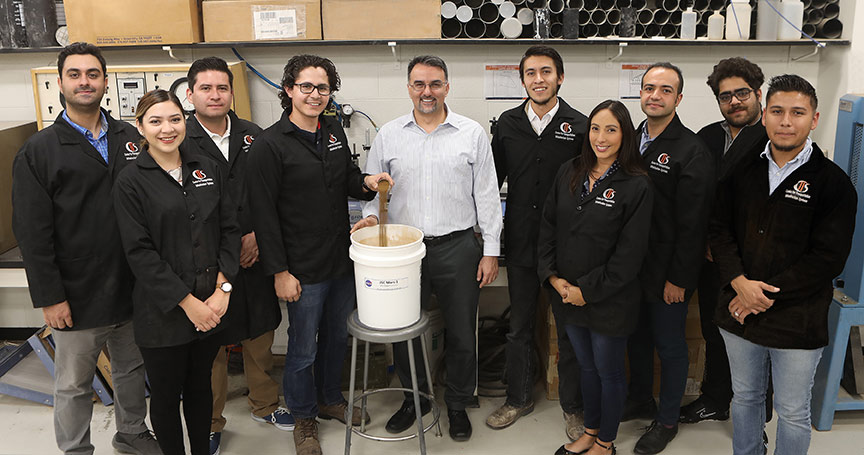UTEP Receives Award from NASA to Characterize Martian Soil
Last Updated on October 28, 2019 at 12:00 AM
Originally published October 28, 2019
By UC Staff
UTEP Communications
The University of Texas at El Paso's Department of Civil Engineering received an award from NASA's Johnson Space Center (JSC) to investigate the strength and settlement properties of Martian soil, or regolith.

The primary objective of the project is to mechanistically characterize the physical and mechanical properties of the JSC Mars-1 regolith to better understand the physical, mechanical, and physio-chemical properties of the Martian soil simulants. JSC Mars-1 is a regolith simulant developed by NASA based on the data collected by the onboard instruments from the Viking and Pathfinder landers.
Reza Ashtiani, Ph.D., associate professor and project lead, said, "Any Martian mission, from establishment of habitats to rovers operating on planetary surfaces, requires proper characterization of the native soils." He has worked on this multidisciplinary effort with co-principal investigator Darren Cone, Ph.D., professor of metallurgical, materials and biomedical engineering at UTEP and director of the campus' Center for the Advancement of Space Safety and Mission Assurance Research (CASSMAR).
Ashtiani's research team in the Department of Civil Engineering developed and executed an experiment to simulate the densification of fragmental and unconsolidated rocks in the event of Marsquakes, meteorite impacts and passage of Mars rovers.
Ashtiani said regolith research has implications that can affect the design of astronaut suits and the wheels on Martian rovers.
"In addition to the geotechnical aspects and soil-structure interactions, regolith research has many facets in space explorations," he said. "For instance, the design of the extravehicular astronaut suits and their survivability is primarily dependent on the geometrical properties of regolith in harsh environments."
Undergraduate civil engineering students Jesus Baca, Alan Quinonez and German Gary were instrumental members of the regolith characterization team. Baca described his participation in the project as an excellent opportunity to reinforce his passion for experimental and computational geomechanics.
To learn about CASSMAR’s work, visit utep.edu/engineering/cassmar.